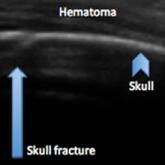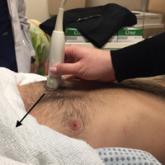Article

Identifying Pediatric Skull Fracture Using Point-of-Care Ultrasound
- Author:
- Rebecca Caton, MD
- Pavitra Kotini-Shah, MD
- Abdulaziz Ahmed
- Joseph S. Colla, MD, RDMS
Evaluating pediatric patients presenting to the ED with head trauma can be a...
Article

Emergency Ultrasound: Identification of Aortic Dissection Using Limited Bedside Ultrasound
- Author:
- Joseph S. Colla, MD
- Pavitra Kotini-Shah, MD
- Ryan B. Scholz, DO
- Wesley Eilbert, MD
